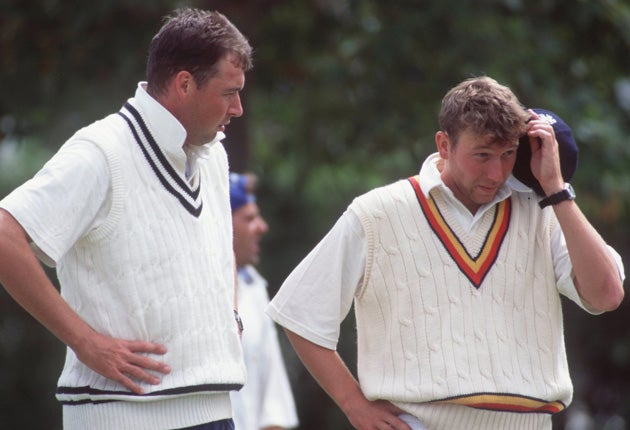Angus Fraser: Batting buddies were a net loss in my day
It worked for Panesar, but when batsmen mentor tail-enders, sparks can fly

Your support helps us to tell the story
From reproductive rights to climate change to Big Tech, The Independent is on the ground when the story is developing. Whether it's investigating the financials of Elon Musk's pro-Trump PAC or producing our latest documentary, 'The A Word', which shines a light on the American women fighting for reproductive rights, we know how important it is to parse out the facts from the messaging.
At such a critical moment in US history, we need reporters on the ground. Your donation allows us to keep sending journalists to speak to both sides of the story.
The Independent is trusted by Americans across the entire political spectrum. And unlike many other quality news outlets, we choose not to lock Americans out of our reporting and analysis with paywalls. We believe quality journalism should be available to everyone, paid for by those who can afford it.
Your support makes all the difference.The concept of batting buddies – a top-order batsman taking a tail-ender under his wing to improve his batting – is not new. It was introduced on England's 1997-98 tour of West Indies where, sadly, it had far less of an impact than it did during Sunday's remarkable and heroic rearguard display from James Anderson and Monty Panesar in the first Ashes Test.
In 1997-98 Michael Atherton was designated as my batting buddy but our working relationship lasted only one practice session. Being a tall man and possessing limited shots off the back foot, I did not play short-pitched fast bowling particularly well. My head also fell to the off side, meaning that I played around my front pad, a deficiency that made me an lbw candidate, and these were the two areas that Atherton attempted to address.
Prior to practice one day we met up early at the nets to put our plan into action. In the nets he threw balls underarm and fast at my head to sharpen my reflexes and get me used to moving out of the way of the ball. In the past I would turn my head and attempt to punch it away, a flawed reaction that resulted in several cheap dismissals and a couple of broken fingers. Atherton also suggested that I adopted a Tony Greig stance – bat in the air rather than resting on the ground – as the bowler ran up to bowl. This, he thought, would stop my head falling over. So far so good.
Everything went pear-shaped when I entered the nets for a full-on batting session. Atherton took his position behind the netting and it wasn't long before he started barking instructions. Evasion of the short ball did not go very well and, with my bat high in the air, I was bowled by yorkers on a couple of occasions.
Calm, collected, constructive criticism from Atherton quickly turned to despair and a row erupted between the two of us. Mutterings of "what's the point?" and "waste of bloody time" emerged from behind me as I missed another ball, to which there would have undoubtedly been a reply of "just piss off and leave me alone". The partnership ended with Atherton walking off and saying something like "that's it, I've had enough – I can't work with him". So, unlike Panesar's buddy Paul Collingwood, Atherton could take no credit for my famous match-saving batting performance against South Africa in 1998. At Old Trafford I only had 13 balls from Allan Donald to keep out and somehow I managed to do it.
As is always the case, it is far more nerve-racking watching on the sidelines than actually being out there in the middle, and I am sure Anderson and Panesar will have thought about what took place possibly happening as they made their way to Sophia Gardens on Sunday morning. Once you get into the middle you know what you have to do and your professionalism takes over. Sitting in the dressing room with your pads on and not knowing whether you will be needed causes the greatest anxiety. In 1998 there was confusion over when the game would finish too, but somehow Robert Croft and I managed to get through. Croft was dropped for the next Test and the same could happen to Panesar.
But the draw felt like a win and South Africa were a shattered side. England turned a 1-0 deficit into a 2-1 victory in the final two Tests of the series, and Andrew Strauss will be hoping that this performance brings about a similar turnaround.
Join our commenting forum
Join thought-provoking conversations, follow other Independent readers and see their replies
Comments